Radio, Podcasts and Documentary
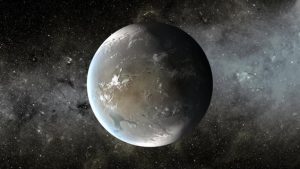 NPR Science Friday with Ira Flatow — Searching for Earth 2.0
NPR Science Friday with Ira Flatow — Searching for Earth 2.0
November 15th, 2013
One in every five sunlike stars in the Milky Way may have an Earth-sized planet circling it in the zone Goldilocks; the sweet spot where liquid water could exist. That’s according to a new analysis of data from the Kepler spacecraft. Sara Seager, an exoplanet hunter at MIT, talks about what’s next in the hunt for Earth 2.0.
Listen to this show (23:40)
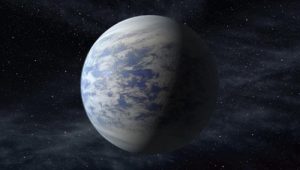 NPR WBUR — On Point: Earth 20? Billions of Reasons Why Possible
NPR WBUR — On Point: Earth 20? Billions of Reasons Why Possible
November 6th, 2013
The news from space this week gets our attention: There may be 40 billion Earth-like planets in our Milky Way galaxy. Planets like relatively say the researchers. In zone. Not too hot, not too cold. Forty billion chances for life to get started and evolve on Earth-like planets around Sun-like stars. Wow. Earth 2.0. And we thought we were special. Well, around here we are. The closest near-Earth Goldilocksthe common,Earth 2.0.
Listen to this show (46:39)
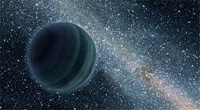 NPR — Science Friday with Ira Flatow: Exoplanets Floating Freely, Without A Star
NPR — Science Friday with Ira Flatow: Exoplanets Floating Freely, Without A Star
May 20th, 2011
Reporting in Nature, researchers write of ten newly discovered exoplanets that appear to be very distant from their stars, or not orbiting them at all. Astronomer Joachim Wambsganss and planetary scientist Sara Seager talk about the discovery, and whether such planets could support life
Image credit: NASA/JPL-Caltech
Listen to this show (21:03)
 WPR — The Kathleen Dunn Show: Kepler and Exoplanet Update
WPR — The Kathleen Dunn Show: Kepler and Exoplanet Update
February 27, 2011
Last week NASA announced that the Kepler Mission has discovered over 1,000 new potential planets. Kathleen Dunn and her guests discuss the hunt for habitable planets.
Listen to this show (50:57)
 CBC — As It Happens: New Planets
CBC — As It Happens: New Planets
June 18, 2008
We Earthlings like to think we’re pretty darned special. Sure, our planet may be a bit of a runt, orbiting a run-of-the-mill star in the suburbs of our galaxy — but it does have one very important claim to fame. It’s the only planet out there that can support life. At least… so far.
Over the past 15 years or so, scientists have discovered oodles of planets orbiting nearby stars. For the most part, they’ve been big gassy giants, too big and nasty to support life. But our coveted place in the universe may soon be contested. Recently, a group of researchers took a good hard look at about two hundred stars that are about the same size as our own sun. And, as much as I hate to burst our collective bubble, it turns out there are a lot of Earth-sized planets out there.
Dr. Sara Seager is a planetary scientist at the Massachusetts Institute of Technology. She helped organize the conference where these findings were revealed.
NPR WBUR — On Point: The Mars Mission
May 29, 2008
Robotic Mars exploration has been no picnic. Half of all Mars missions have ended in failure. But right now, the Mars Phoenix Lander is up there, well-landed, sending back astonishing images, and — it appears — shaking off its problems extending the eight-foot arm that will dig for ice. The Phoenix is looking for conditions that would support life on Mars. But the bigger search for life “out there” goes way beyond the Martian north pole, to “weird life” and “exoplanets.”
Listen to this show (24:22)
CBC — Quirks & Quarks: Anything Out There?
March 15, 2008
For hundreds of years, humans have asked, are we alone in the universe? Until recently, if we wanted to answer that question, we had to rely on alien life contacting us. By definition, that meant the aliens had to be intelligent enough and technologically advanced enough to send out signals we could interpret. But over the last decade, there’s been a fundamental shift in the search for life in the cosmos. For the first time, we’re able to look for life directly, on other planets.
CBC — Quirks & Quarks: Planet Runs Hot and Cold
October 28, 2006
We’ve discovered more than 200 planets orbiting other stars, but for the most part we know very little about them. We know they’re big, because those are the only planets we can find. Discovering more about them has been difficult because their light is so dim compared to the light of their nearby star. A team using the Spitzer Space Telescope, however, has used a clever technique to gain insights into the atmosphere of one of these planets. They’ve determined that this planet has one very hot and one relatively cold side, and that the atmosphere must have a special composition to allow this to happen. Canadian astronomer Dr. Sara Seager, a Senior Research Scientist at the Carnegie Institution of Washington, was a member of the team.
Selected TV Appearances
The Science Channel — NASA’s Unexplained Files
Season 2 (2015), Season 3 (2016), Season 4 (2016)
A look is taken at exclusive NASA footage and firsthand accounts of mysterious fly objects from astronauts and scientists are presented.
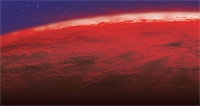 National Geographic — Alien Earths by Dana Berry
National Geographic — Alien Earths by Dana Berry
August 2009
Join leading astronomers on a visual journey beyond our solar system in search of planets like Earth. Explore bizarre worlds that stretch our imagination: planets with iron rain and hot ice, with diamonds everywhere, and endless oceans of gas.
Planet Hunters by Dana Berry
Summer/Fall 2011
 Science Channel — Through the Wormhole with Morgan Freeman
Science Channel — Through the Wormhole with Morgan Freeman
August 2011
An episode on Exoplanets and Speculation on the possible alien animal life forms.
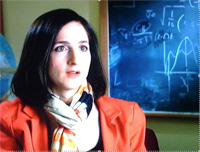 History Channel — Ancient Aliens
History Channel — Ancient Aliens
Pilot (2009), Season 1 (2010), Season 2 (2010), Season 3 (2011)
Hollywood entertainment, not a documentary. Professor Seager’s cameo appearances aim to set the record straight. Statement from Professor Seager:
The initial pilot show was intended to showcase both opponents and proponents to the Ancient Alien theory, but the final product was almost entirely in support of the theory. The Ancient Aliens program staff have carefully crafted my interview contributions to show support for many fringe science concepts by implying connections between the fringe idea and legitimate scientific concepts. For example, my cameo explaining maglev trains is juxtaposed with suggestions that megalithic monuments were constructed in prehistory using magnetic anti-gravity. Portrayal of myself as a supporter rather than opponent of all pseudoscience and alien visitation claims is not expected or intended by myself.
Web Video or Podcast Interviews
 Brief Kepler Update
Brief Kepler Update
February 2011

 PBS: Big Ideas. Big Thinkers
PBS: Big Ideas. Big Thinkers